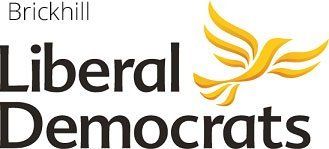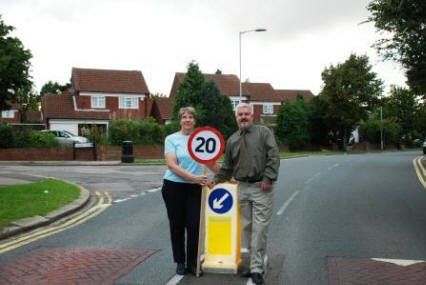20mph_zones



Brickhill 20mph Zones
We believe that 20mph zones make sense in residential areas.
- They save lives
- Reduce congestion
- Reduce emissions
- Encourage cycling and walking
The new government guidance ‘Setting Local Speed Limits’ (Department of Transport circular 01/2013) asks all local traffic authorities to consider 20 mph limits as a “priority for action”. The Council supports this approach and believes that reducing the speed of traffic in residential areas is a major factor in reducing the frequency and severity of collisions, reduce congestion, discourage rat-running, and encourage walking and cycling to make the Borough’s communities safer for residents. In the UK over 11 million people already live in areas that are implementing or politically committed to introducing widespread 20mph speed limits. These include authorities such as Lancashire, Newcastle, Bristol, Liverpool, Sheffield, Oxford and Brighton.
Bedford Borough Council is reflecting this national policy aided by the changes in government policy which encourage 20mph limits by making them easier to introduce. Mayor Dave Hodgson recognises the need to set appropriate speed limits in line with current government guidance and it is actively supporting the reduction of speed limits across the Borough to make the roads safer for all users. Over twenty schemes have already taken place.
The Council has formally adopted the implementation of 20mph speed limits as part of its Local Transport Plan (LTP3) to promote reduced speeds in residential areas by requiring motorists to drive slower and to create a safer environment for all road users. In particular the policy outlined in the Road Safety Strategy - Action Plan commits the Council at Action 8 to "Investigate and where appropriate install 20mph zones in residential areas and around schools." The Council wants to encourage self-compliance with 20mph being seen as a safe speed to travel in residential areas particularly in these vulnerable areas.
Occasionally there have been suggestion that a 25mph limit might be a more suitable speed limit. It is not possible to introduce a speed limit lower than 30mph other than a 20mph limit without special permission from the Secretary of State and permission would not be granted for a 25mph limit.
A Royal Society for the Prevention of Accidents study showed that at 20mph there was a 2.5% chance of pedestrians being fatally injured, compared to a 20% chance at 30mph. According to ROSPA, a pedestrian struck at 20mph has a 97% chance of survival; this falls to 80% at 30mph and 50% at 35mph. 20mph zones are very effective at preventing injuries and their greater use, especially in residential areas, would help to reduce the number of traffic injuries in the UK. National and international research is increasingly showing that 20mph speed limits not only lead to a reduction in road collisions and the severity of casualties, they also improve the quality of life of local neighbourhoods and encourage more sustainable transport modes such as walking and cycling for local trips, thereby reducing pollution and noise. This in turn brings significant health benefits, all of which should make our communities better places to live, work and visit. 20mph limits assist in allowing others to share the road, they make it easier for pedestrians to cross roads, particularly children and the elderly.
Of course 20mph limits are not just good news for pedestrians, they actually reduce congestion for motorists, improving traffic flow, as it flows more smoothly through junctions at lower speeds. Fuel consumption, pollution and engine wear are primarily affected by driving style, with hard acceleration and braking contributing to an increase in these. A 20mph limit in a residential area can reduce the level of braking and acceleration as it smooths traffic flow through junctions on an urban road network. These limits therefore reduce levels of fuel consumption and general vehicle wear. Research also indicates that a reduced speed limit can reduce most forms of pollution generated by motor vehicles, including NOx and air borne particulates generated from brake and tyre wear.
Guidance issued by the Association of Chief Police Officers (ACPO) is to not undertake routine enforcement of 20mph limits, but motorists should be aware that police forces are able to enforce any legally established speed limit. Moreover, motorists should recognise that 20mph speed limits are for the benefit of local communities and we should all play a part in reducing speed and influencing driver behaviour. Over time we want drivers to become accustomed to 20mph being a normal speed limit for residential roads in the interests of safety for all road users.
Links to more information
Printed, Published and Promoted by Charles Royden on behalf of the Liberal Democrats at The Vicarage, Calder Rise, Brickhill, Bedford MK41 7UY.
Our privacy statement is available here Privacy Statement Charles Royden Privacy Statement Wendy Rider
Data subjects may exercise their information rights by contacting charlesroyden@gmail.com or upon request.
